With few exceptions, Bob and I have been alone together 24-7 for the past 18 months. It’s worked out surprisingly well! But it’s good to shake things up. When our son Dylan and his partner Stephanie said they’d like to meet us in Croatia, we leapt at the prospect. And then Bob’s two sisters decided to join us for a vacation in Italy a week later. Also exciting!
So in mid-September, we flew from London to Dubrovnik to spend 10 days in Croatia. We then spent a “transition” week in Slovenia before meeting Bob’s sisters in Venice.
Suddenly, we are popular and in the jet-set!
Scotland and Croatia Are Not Alike
After three weeks in an increasingly cold and rainy Scotland and a short two-hour flight, we were nearly blinded by the bright blue cloudless sky and brilliant sunshine of Croatia. We loved Scotland and hated to leave, but can understand why so many Brits vacation in Croatia these days. We happily joined this hot summer universe of scantily clad (but also aging) humans lounging around the Adriatic, downing Aperol Spritzes and slurping down octopus salad.
Within minutes, we had swapped our long underwear for our bathing suits that had been stuffed down, unused, in the recesses of our backpacks. And just like that we were diving into the clear and sparkling sea and doing our best to look all Euro-glam. (I’m not sure we pulled that off since we were still wearing the same boring and now very well-worn hiking clothes that we’ve had on for a year and a half. But we were very glamorous “on the inside.”)
Dylan and Stephanie arrived the next day, having valiantly conquered their cost-saving flight logistics. Stephanie is thorough, so she had compared and contrasted every single one of the 300+ AirBnB homes available for our dates. So, needless to say, our place was great. It was an updated 14th-century stone house in the pedestrian-only seaside village of Cavtat (pronounced TSAV-tat). Located a few miles southwest of Dubrovnik, Cavtat was originally founded by the Greeks as Epidaurus in the 6th century BC. These days, its sheltered harbor seems to be a favorite place to anchor huge yachts.
Tellingly, our tiny Croatian language book headlined the following sample useful phrase on its cover: “Where can I park my yacht?”
Nearly everyone spoke English very well in and around Cavtat, and we heard that kids start studying it in primary school. We learned a few key Croatian words to be polite—we never did need to ask where to park our yacht. But I doubt anyone mistook us for actual Croatian-speaking people.
We had a fabulous time together, with near-perfect weather, delicious seafood, beauty all around, and loads of fun. As a bonus, Dylan and Steph brought me a couple of “new” shirts from our storage unit!
We basically lived outdoors for 10 sunny days, thanks to our outdoor kitchen and eating area and comfy lounge chairs. Dylan grilled up some fabulous meals, using fresh fish and veggies from the harbor market. The tomatoes were amazing, and we enjoyed hanging out in our hot tub almost every evening after dinner. It all felt very decadent and glorious. It was a nice departure indeed from the typical Bob and Lorrie Rugged Adventure Scene: where you must earn your comfort!

Dubrovnik
I’m sorry to say that we were so focused on just being together that we learned only the most superficial things about Croatia, so that’s all we can pass on.
Dubrovnik is as crazy beautiful as everyone says it is. It’s been completely rebuilt since it was bombed in the early 1990s when Yugoslavia fell apart. It really does feel like a unique historical treasure. We did a fun Game of Thrones tour (the show is filmed in Dubrovnik), and went up a cable car to the mountain for sweeping views of the city.
But it is also crowded. There are huge cruise ships just outside the city walls. We’ve been hanging out in quiet, remote places, so we found the hordes a bit overwhelming. But Dylan and Steph were undaunted. Yay!
The southern Croatia coastline is gorgeous—white limestone cliffs dropping straight into the clear turquoise Adriatic.
The family of our AirBnB host has been farming oysters in Mali Ston (an hour’s drive north of Cavtat) for 500 years. We enjoyed visiting the farm, learning about the oyster business, and sampling oysters minutes after they were pulled from the water. Ston is a walled city in a beautiful area, and there are fabulous quiet beaches nearby.
Cavtat is Gorgeous, Chill, and Fun
We were really pleased that we stayed in Cavtat rather than in Dubrovnik itself as it was an oasis of peace and quiet. We found a few favorite small beaches, and the temperature of the water was perfect for swimming. We took a dip almost every day—sometimes twice! We never saw another town that looked better than Cavtat. It is so gorgeous, and being in a pedestrian-only town is such a pleasure.
We had our first experience with stand up paddleboarding and with parasailing. Dylan and Stephanie had a great time scuba diving and making friends with an octopus. Hopefully it was not the same one we ate as an appetizer that evening.
It’s easy to get to Dubrovnik from Cavtat; small passenger ferries scoot back and forth from dawn to dusk. It takes between 30 minutes and an hour depending on the number of stops.
Toward the end of our visit, the wind kicked up tremendously and Dylan and Stephanie were stranded in Dubrovnik with no ferry ride home. They finally were able to catch a bus, and they shared fun stories about their transportation adventures and coping strategies.
A Day in Montenegro
Just for fun, Bob and I took a day trip to Montenegro. (Doesn’t that sound fun?) It was especially fun waiting more than three hours to get across the border (due to “technical problems”). It’s a trip that ordinarily should only take about a half hour. So that killed a bit of the day, but we had enough time to have lunch in the old town of Herceg Novi, visit two old forts, and take a drive around the scenic Bay of Kotor—like Dubrovnik, a UNESCO World Heritage Site.
We were surprised at Montenegro’s lush tropical vegetation, quite unlike the dry and stony landscape of nearby southern Croatia. Dramatic clouds rolled in but we bravely set off up a sketchy gravel mountain road to get some panoramic views before heading back to Croatia. There were a few moments when I thought perhaps this had been a bad decision. We didn’t have a map beyond googlemaps. We had ventured into a sparsely inhabited area with no cell service. The road was increasingly steep and deeply rutted. It looked like we were in for a serious downpour with possible lightning. We didn’t speak Montenegrin or whatever language they speak (on a day trip you know so little). And we didn’t know if the woods were filled with armed bandits. My imagination had a field day!
But it all worked out. We found our way and only slightly damaged the rental car trying to squeeze through on a narrow section of the road. As a final stroke of luck, the technical problem at the border was resolved by the time we crossed back through. A good time was had by all. No regrets!
All Good Things Must Come to an End
After a very pleasurable ten days together, Dylan and Steph went back to their lives and their beloved dog Drogo.

We were left feeling grateful that they chose to spend their vacation with us and that everything was so nice. Thanks guys!! See you in December!
Slovenia-bound
We, on the other hand, hit the road and headed north to Slovenia. To get there, you must cross through Bosnia-Herzegovina. Before planning this trip, we had no idea that southern Croatia, including Dubrovnik, is cut off from the rest of Croatia. In other words, if you live in southern Croatia, you must cross through another country to get to any other part of your country. It feels isolating to those living there. We heard that a bridge—the Pelješki Most—will be built in the future to eliminate this inconvenience.
Fortunately, there were no technical problems at the crossing (two really, from Croatia into Bosnia, and then a few miles down the road from Bosnia back into Croatia). We made it all the way to the Croatian capital city of Zagreb, where we strolled around, had a nice dinner, and stayed the night. It was a stunning city worth a longer stay.
The next morning, we took a comfy bus to Ljubljana, Slovenia, staying just long enough to pick up a rental car to drive to the mountains—which was a dramatic change of pace. Slovenia seemed like a good choice for a mountain hiking interlude between the Croatia chapter and our upcoming chapter in Italy. We settled into an apartment in Bohinjska Bistrica (“Boh-HEEN-ska Bee-STRICT-sa”), a small village in the Julian Alps, not far from Lake Bled (“Bled”).
Wow! The mountains in this part of Slovenia are beautiful. Pointy rocky peaks tower over smaller hills covered in forest and pasture. Triglav is the highest peak and is the centerpiece of Slovenia’s only national park. The hiking trails in the Triglav National Park are carefully marked and scrupulously maintained, and the views are incredible.

Slovenia is easy to visit and spotlessly clean (as was Croatia). Also like Croatia, most people speak at least some English.
The food in this part of Slovenia was tasty but not exciting—mostly meat, potatoes, and cabbage. When we asked for vegetables we were offered sauerkraut. (Time to cook at home!) On the up side, the local wine was very good and very cheap.
The fall weather was crisp and glorious. The foliage was turning golden and the air felt fresh and clean. We were clearly now in the off-season and tourist numbers were dwindling. Farmers worked the fields around us, and the apples were abundant, hanging low and falling off the trees.
If you like the mountains, this part of Slovenia is a great destination. We hiked most days, mixing it up with a bike ride through the countryside.
We visited nearby Lake Bled to stroll around the lake and visit its cliff-hugging fairytale castle. The castle and the church of the Mother of God on the Lake lend an iconic beauty to Lake Bled, attracting lots of tourists (ok: bus loads, actually). For fun, Google images of the lake, in different seasons and times of day. It’s always lovely.
People debate whether Lake Bled or Lake Bohinjska is the most beautiful. Both have incredibly clear water that reflects the surrounding mountains—summer swimming would be glorious.
Bohinjska is larger and more natural, and has far fewer tourists. We enjoyed them both, but we’re more the Bohinjska types.
Near the shores of Lake Bohinjska is the Vogel ski area, where you can take a cable car up the mountain and tackle some amazing hikes with 360 degree lake and mountain views. Our cable car was packed, but we only saw about 10 people on a 9-mile loop trail over the course of the day. Or was it 9 people over 10 miles? Anyway, you get it.
When we did meet other fellow hikers, many were doing hut-to-hut hikes—a form of travel which I adore. Why? It’s like backpacking without the heavy backpack. It’s still rustic, and you get to be way out there and/or up there but then you sleep in a “real bed” and in some hut systems they even feed you delicious meals. All of this lightens your pack considerably. Slovenia has a well-regarded mountain hut system. If we return, I’d like to try it out.
As usual, we wished we had more time in Slovenia! But we had places to go and people to meet up with…
Next installment: Italy.













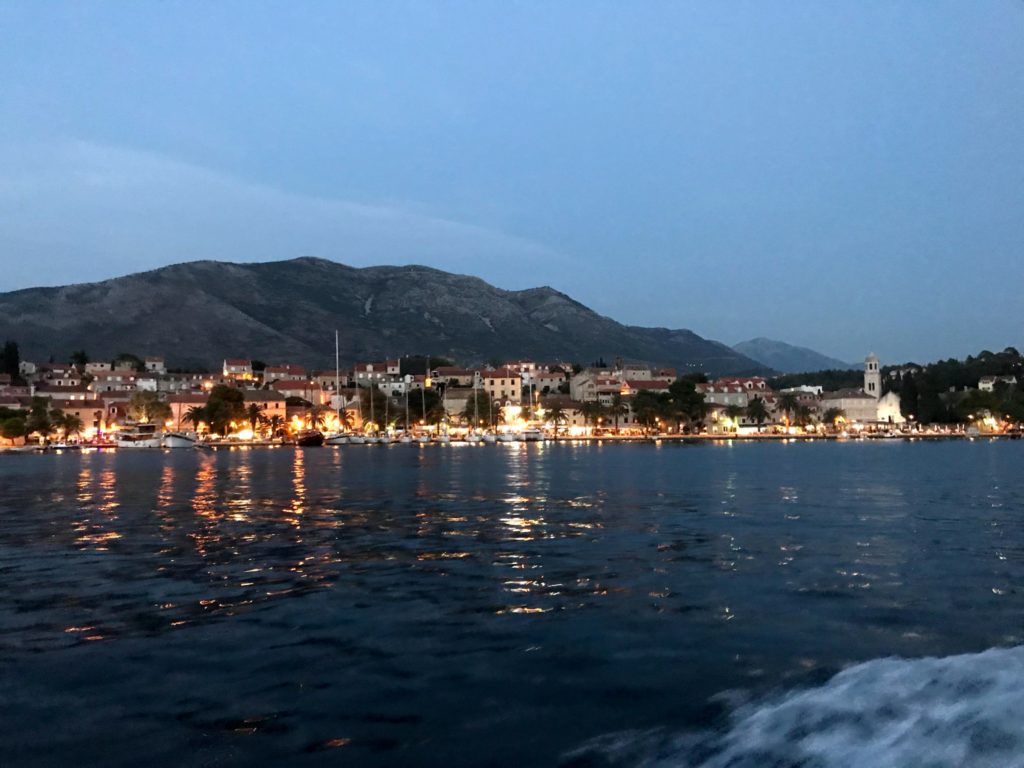








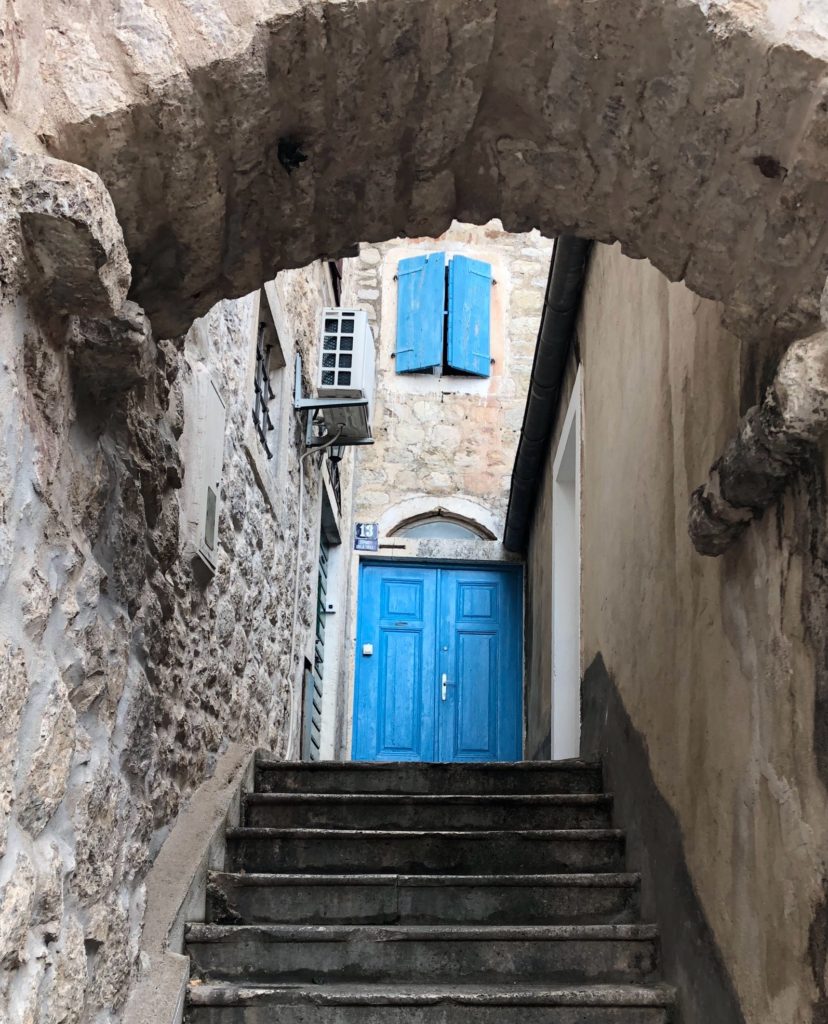

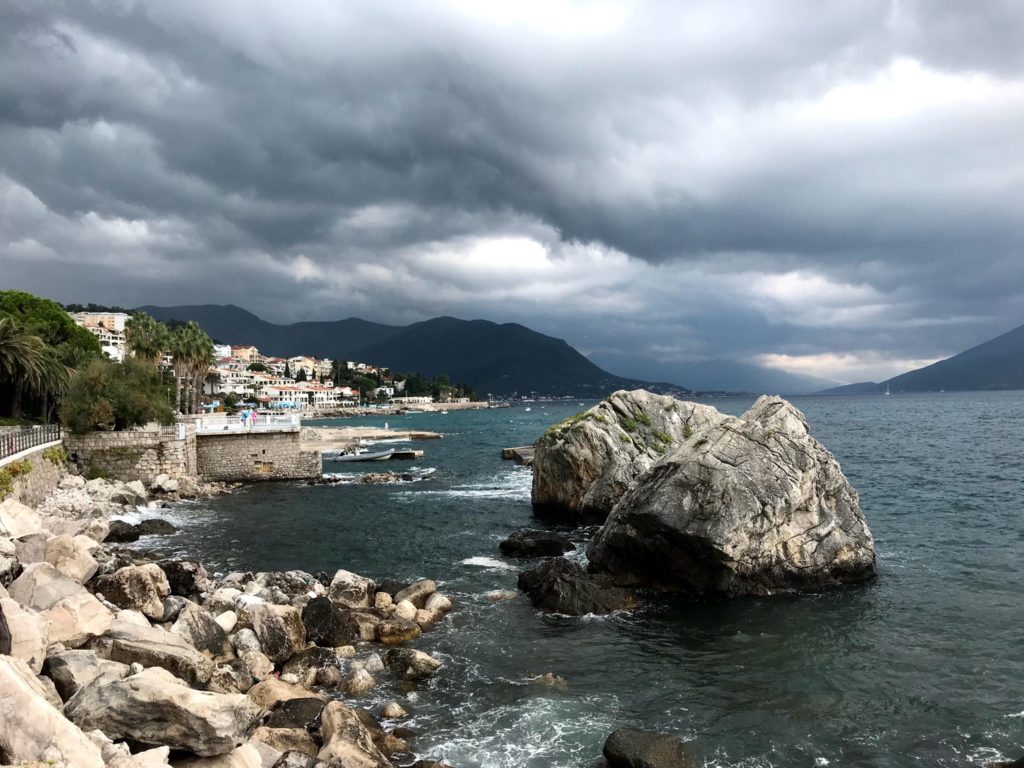



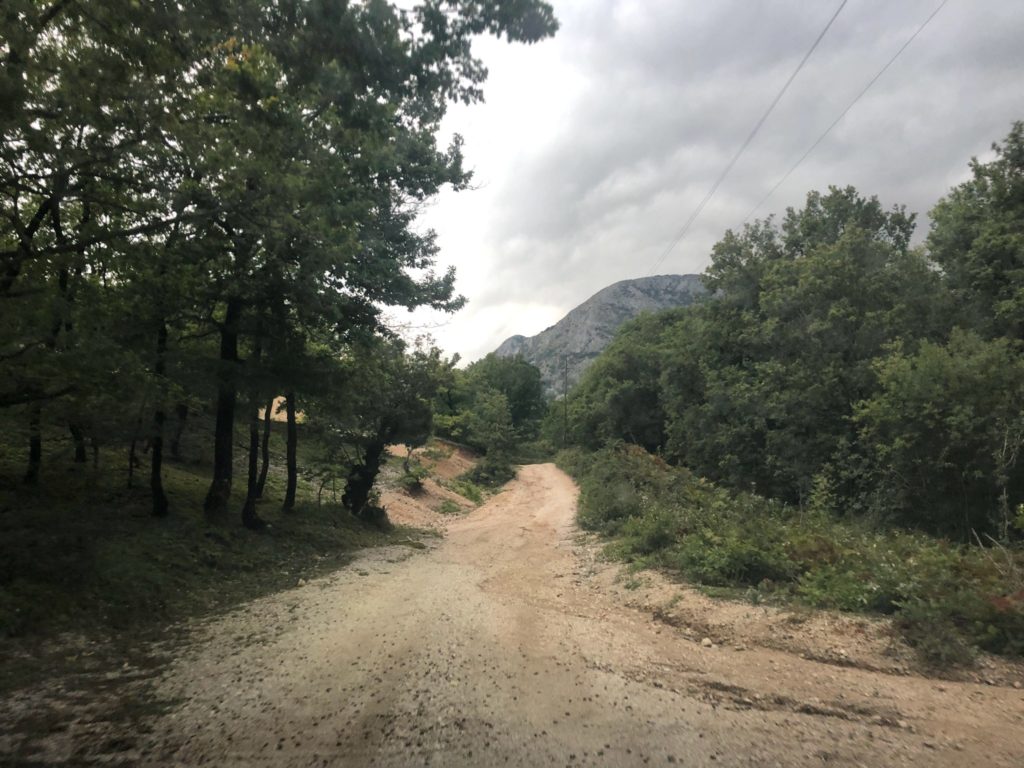






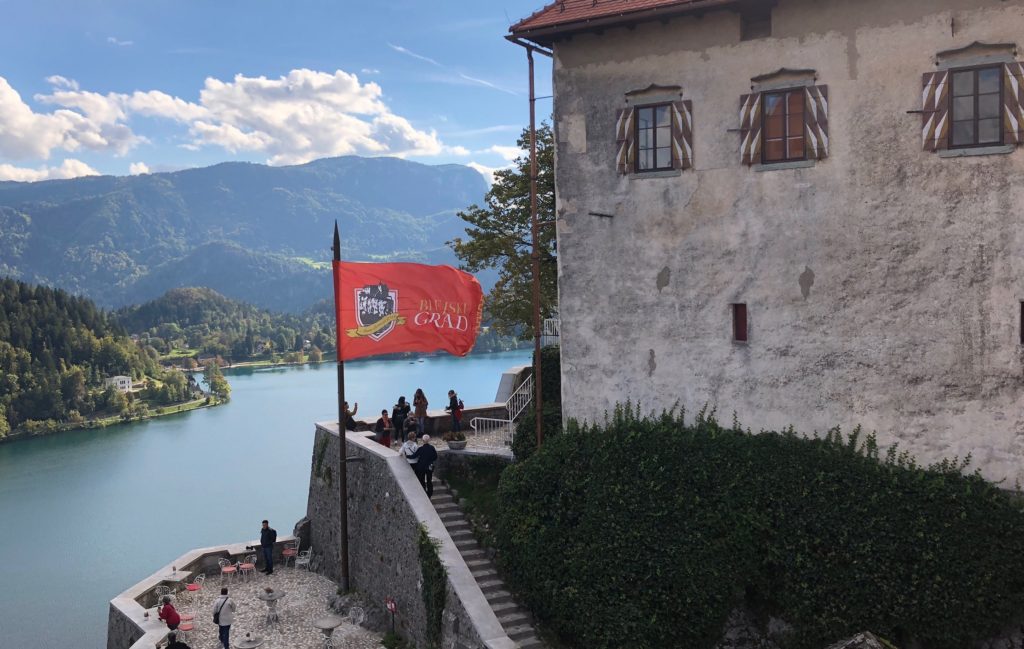






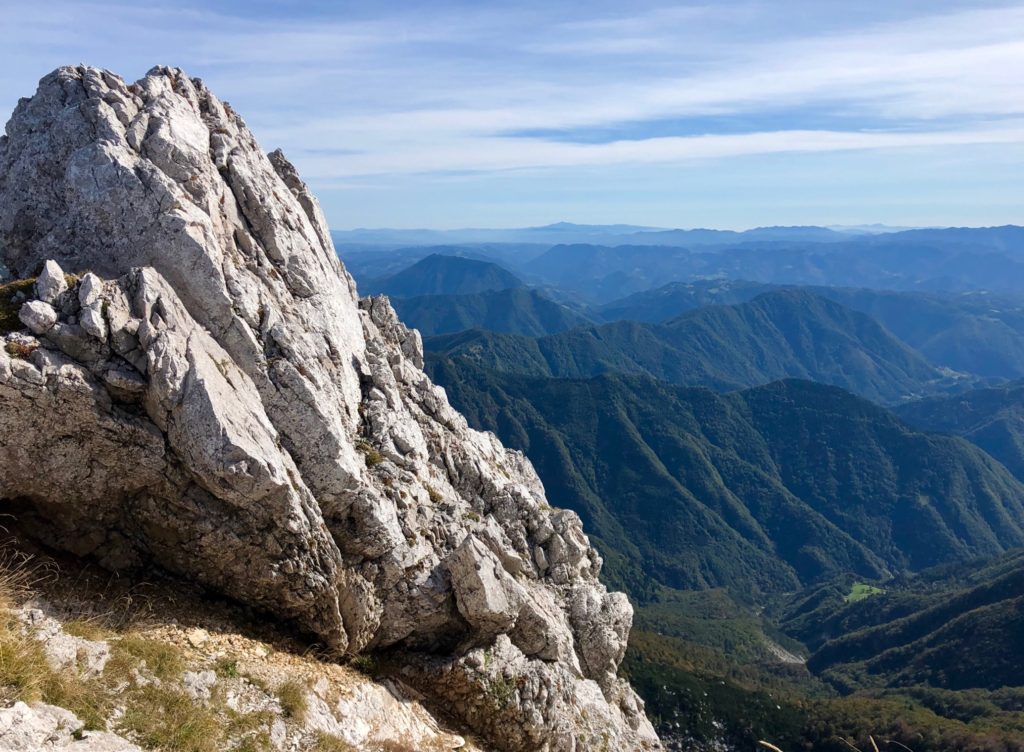
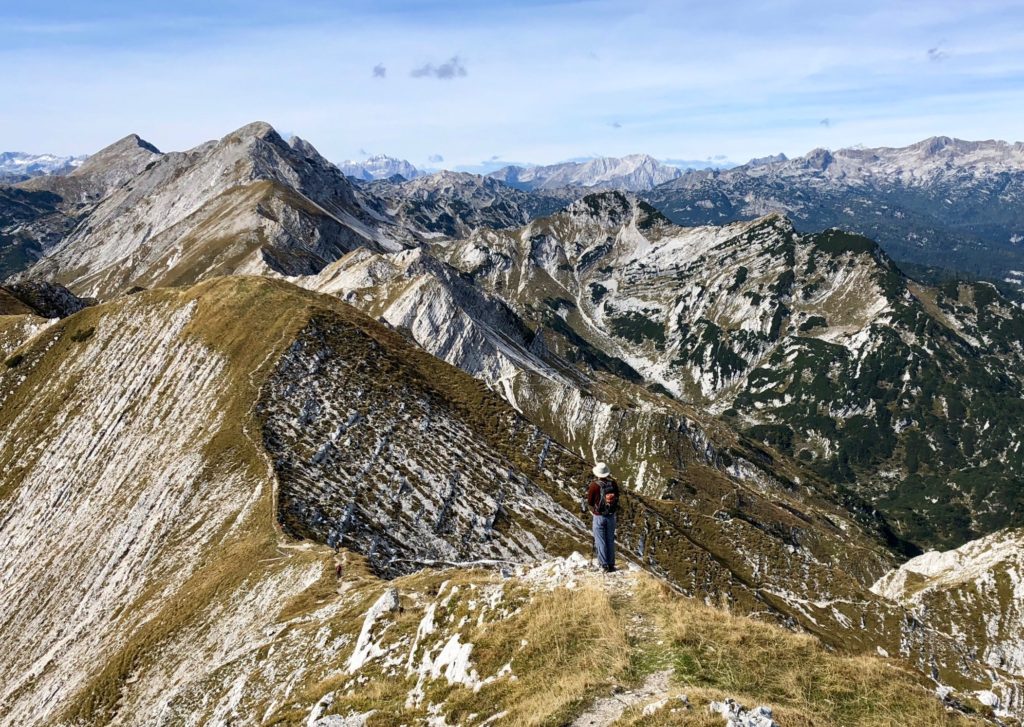



Congrats for the family reunion. OUtstanding scenic pix for this part of the trip. All best,
Ramon